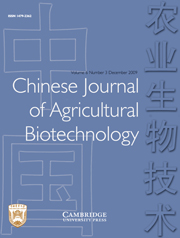Article contents
Research progress in techniques for detecting genetically modified organisms
Published online by Cambridge University Press: 24 April 2009
Abstract
The techniques used to detect genetically modified organisms (GMO), including qualitative polymerase chain reaction (PCR), quantitative PCR, enzyme-linked immunosorbent assay (ELISA) and many others, are systematically described and discussed. The application progress of GMO in species-specific detection, endogenous genes, standard substances and restraining factors influencing detection are reviewed. The ongoing problems and development prospects of detection techniques of GMO are also pointed out.
- Type
- Review Article
- Information
- Copyright
- Copyright © China Agricultural University 2009
References
- 6
- Cited by


